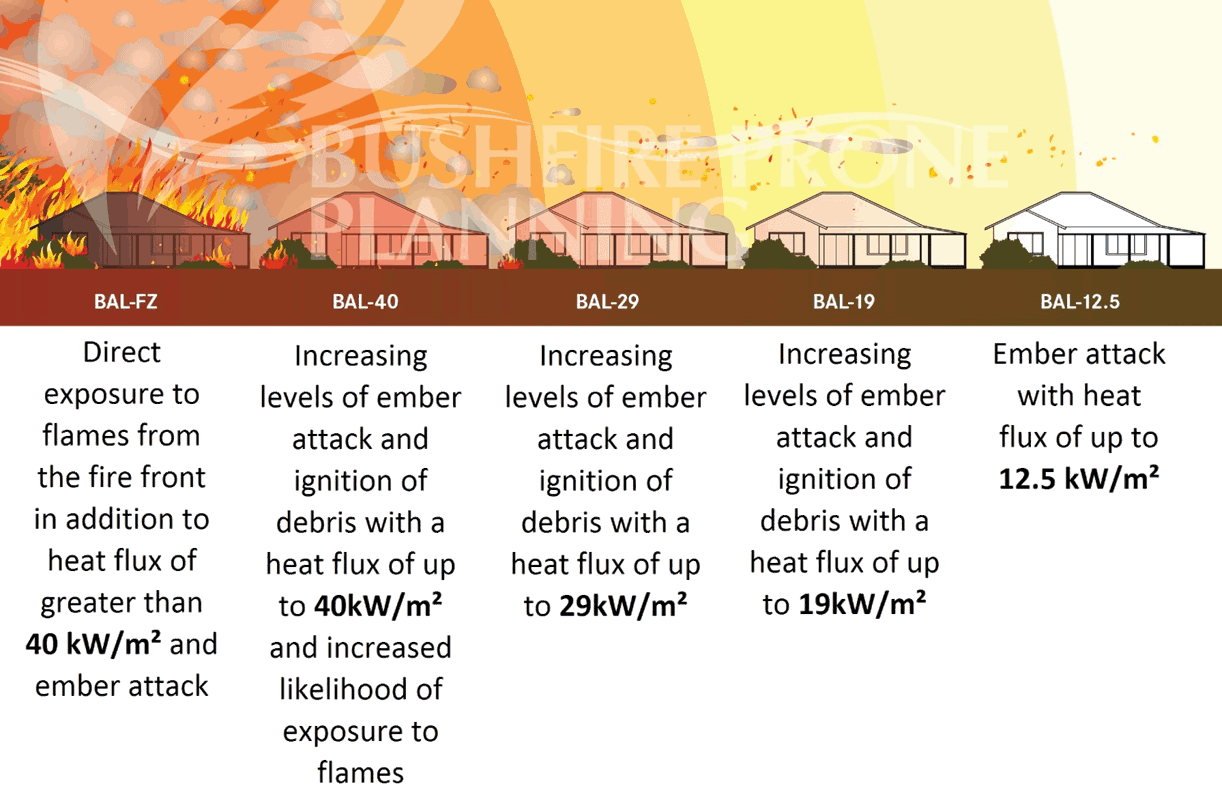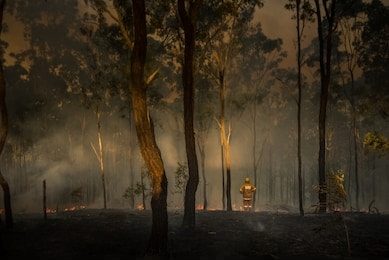Do you live in a bushfire prone area? If so, then it is important that you understand what the Australian standard Bushfire Attack Level (BAL) is, how your home is rated and what you can do to protect it. Buying BAL-rated products gives you peace of mind. BAL is a scale that is used in the construction of buildings to determine a building’s fire risk, particularly in relation to bushfires.
When constructing new homes and buildings in these areas, the BAL scale is used to assess the suitability and safety of the construction and building and there are six ratings overall. Each level dictates the construction methods and materials used and their aim is to not only prevent a bushfire from destroying the building, but also prevent it from spreading on to other areas.
With each increase in level, it is assumed that it meets all the risks from the previous rating alongside the additional ones at the new level.

So what are the six Bushfire Attack Levels?
BAL Low – No significant risk. No construction requirements.
This is the lowest level on the scale and suggests that there is almost no risk from embers, radiant heat, or flames. This means that builders do not need to meet any construction requirements, although if you are worried about your home then it is advisable to follow the BAL 12.5 requirements to protect your home.
BAL 12.5 – Ember Risk
BAL 12.5 is the second level on the scale and is issued when there is sufficient enough risk of fire from either embers or burning debris. This level indicates that construction will need to meet the set criteria laid out under BAL 12.5 and you should take steps to protect your home too. This level includes measures such as ensuring roof ventilation openings including gables should be covered in an ember mesh. It also specifies that all gutter or leaf guards used be non-combustible so if you are thinking of fitting a gutter guard system make sure it has a CSIRO flammability index of 0.
This was enforced on new homes built after 2013 so it might be worth checking if you have an older home to see what Bushfire protection measures were built in during construction. You can find the full list of measures needed to comply with BAL 12.5 here.
All our gutter guard products comply with this standard.
BAL 19 – Increased heat flux and the possibility of debris igniting due to increased embers
The third level indicates a moderate risk of the building catching fire and means that there is sufficient enough cause for concern. In particular, the two main factors to be aware of are increased radiant heat and ember attacks, so buildings should be constructed to prevent damage from these and also help to stop the spread of the fire. It is possible to reduce BAL 19 by removing the elements that increase the risk of radiant heat. The main difference in this level is the specification for thicker glass to be better able to withstand increased radiant heat.
All of our Metal Gutter guard products comply with this standard so you can choose from our Guttermesh Aluminium or Tuffmesh Range


BAL 29 – Increased heat flux, burning debris, and risk to building integrity.
BAL 29 indicates that there is a high risk of the building catching fire because of either burning embers or increased heat flux. When construction begins on a property, the building must meet all required elements of BAL 29 to protect against embers, debris, and heat and this level also indicates that there is a risk of the building being exposed to open flames. This means that the walls of the property must be bushfire resistant and clad in cement, steel, or bushfire resistant timber of a higher thickness as well as increased thickness of the windows.
For this level both our Guttermesh and Tuffmesh metal range are compliant, but we would advise most homeowners that Tuffmesh may be the better option as a BAL 29 rating often means that there are trees in close proximity to the property and the Tuff mesh is better able to withstand large falling branches over a long period of time.
BAL 40 – Increased exposure to flames
BAL 40 is the penultimate level on the scale and carries all of the risks of the previous levels but now also indicates that the property is now facing a significantly higher risk of exposure to flames. BAL 40 means that construction of the property will need to meet all requirements of this level, including the use of materials that are highly resistant to flames. Each property should also be actively preventing the spread of flames, embers, and radiant heat. Wooden cladding is prohibited at this level and materials used must comply with AS 1530.8.1 and air conditioning units cannot be mounted to the roof.
For BAL 40 our ember guard product both Tuffmesh Ember and our steel ember guard meet this rating.
BAL FZ or Flame Zone – Direct contact with flames
The third level indicates a moderate risk of the building catching fire and means that there is sufficient enough cause for concern. In particular, the two main factors to be aware of are increased radiant heat and ember attacks, so buildings should be constructed to prevent damage from these and also help to stop the spread of the fire. It is possible to reduce BAL 19 by removing the elements that increase the risk of radiant heat. The main difference in this level is the specification for thicker glass to be better able to withstand increased radiant heat.
All of our Metal Gutter guard products comply with this standard so you can choose from our Guttermesh Aluminium or Tuffmesh Range





